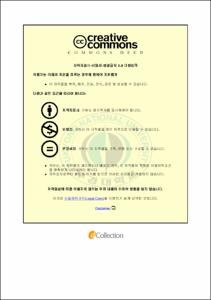Protective effect of porphyra-334 on UVA-induced photoaging in human skin fibroblasts
- Abstract
- 자외선은 피부노화의 주요한 외인성 요인으로서 특히 UVA는 진피에 침투하여 막단백질 분해, 산화적 스트레스 및 염증을 유발하여 광노화를 일으킨다. 본 연구에서는 방사무늬돌김 (Porphya yezoensis)으로부터 mycosporine-like amino acids (MAAs) 3종을 HPLC를 이용하여 분리하였으며 (palythine [RT 2.29], asterina-330 [RT 2.493] 및 porphyra-334 [RT 11.53]), 이들의 LC/MS [M+H]+1에서의 분자량은 각각 m/z 245.1, 289.1, 347.1으로 확인하였다. 이 중 방사무늬돌김의 대부분을 차지하는 porphyra-334의 광노화에 미치는 영향을 알아보고자 인체 유래 피부섬유아세포 (CCD-986sk)에 UVA 10 J/cm2을 조사한 후, 농도별 porphyra-334를 24시간 처리하여 이후의 세포생존율, MMPs생성에 의한 ECM 단백질 분해 및 cytokines의 변화를 관찰하였다. MTS assay 결과, porphyra-334에 대한 세포독성은 나타나지 않았으며, UVA로 유도된 세포독성을 효과적으로 억제하였다. 또한 RT-PCR과 Western blot analysis로 유전자 및 단백질 발현을 확인한 결과, UVA에 의해 생성된 matrix metalloproteinases (MMPs)는 피부 결합조직 내 콜라겐과 다른 ECM 단백질 분해를 촉진하였으나, porphyra-334의 콜라겐 생합성 촉진, 엘라스틴 및 hyaluronan 분해 억제, MMP-1 감소를 통해 주름과 탄력저하와 같은 피부 광손상에 대한 보호효과를 나타내었다. ELISA, RT-PCR, Western blot analysis를 통해 porphyra-334에 의한 염증성 cytokines (TNF-α. IL-1β, IL-6)의 농도 의존적인 생성 감소를 확인하였으며, 특히 TNF-α에서 porphyra-334 처리 전후의 변화가 유의한 수준으로 회복되었으므로, UVA로 유도된 염증 반응에 대한 억제 효과를 기대할 수 있을 것으로 사료된다.
UVA에 대한 porphyra-334의 광노화 보호효과는 3가지의 cell signaling pathway를 통해 조절되어짐을 RT-PCR 및 Western blot analysis를 통해 확인하였다. UVA에 의해 활성화된 ERK, JNK MAP kinase는 porphyra-334에 의해 억제되었으나 p38 MAPK는 자외선에 대한 변화를 보이지 않았다. JNK MAPK의 인산화를 통해 AP-1의 활성화가 유도되며 이로 인한 MMPs 및 c-jun의 증가는 UVA에 의해 광노화가 진행되는 과정으로 보여진다. 콜라겐 합성을 조절하는 TGF-β/Smad singaling pathway는 TGF-βRⅡ의 인산화를 통해 TGF-βRⅠ을 활성화하며 downstream의 receptor-regulated Smads (R-Smads)인 Smad2와 Smad3의 인산화로 인해 common-partner Smads (Co-Smads)인 Smad4와 복합체를 형성, 핵으로 전위되어 전사를 조절함을 확인하였다. 또한, UVA에 의한 EGFR의 활성화는 PI3K/Akt/mTOR signaling pathway를 통해 광노화가 유도되며 porphyra-334에 의해 유의적인 감소를 보였다. 단백질 합성, 세포증식, 대사와 autophagy에 관여하는 mTORC1은 mTOR(Ser2481), GβL, Raptor로 이루어져있는 mTOR complex로서 downstream의 p70S6K, elF4B, RPS6 역시 porphyra-334의 광노화억제효과를 보였다. Akt kinase인 mTORC2의 경우, mTOR(Ser2448), GβL, Rictor로 구성되어 있으며, 이들 역시 UVA에 의해 과발현되며 porphyra-334에 의해 조절됨을 확인하였다.
앞서 살펴본 UV, ROS, MMPs는 광노화의 주요 요인으로 작용하며 이는 lysosomal proteinases인 cathepsins과도 상호작용을 한다. 따라서 UVA에 따른 cathepsins의 변화를 확인하고자 RT-PCR과 Western blot analysis를 통해 mRNA 및 단백질 발현을 확인하였다. 그 결과, UVA 조사시 노화의 주요조절자로 작용하는 cathepsin B, 세포분화에 관여하는 cathepsin D, ECM 항상성 유지에 관여하는 cathepsin K가 감소하였으며, ECM 손상에 관여하는 cathepsin G와 ECM 단백질 분해에 관여하는 cathepsin L가 증가하며 이를 porphyra-334가 조절하는 것으로 나타났다. Lysosomal pathway를 통한 Autophagy 역시 세포내 손상 복원 및 제거를 통해 항상성을 유지하는 조절 기작으로 노화를 방지하고 노화에 따른 각종 질환을 예방하는 필수적 작용으로 보여진다. 본 연구 결과, porphyra-334는 LC-3II 증가, Beclin-1 증가, p62/SQSTM1 감소, ATG7 증가에 의해 autophagy가 유도됨이 규명되었으며, 이는 세포 내 손상을 제거함으로서 세포를 보호하고 노화를 지연시키는 역할을 하는 것으로 보여진다.
- Issued Date
- 2014
- Awarded Date
- 2014. 2
- Type
- Dissertation
- Publisher
- 부경대학교
- Alternative Author(s)
- Ryu, Jina
- Affiliation
- 대학원
- Department
- 대학원 식품생명과학과
- Advisor
- 남택정
- Table Of Contents
- Contents
Contents ⅰ
List of Tables ⅳ
List of Figures ⅴ
Abbreviations ⅹ
Abstract ⅻⅰ
Ⅰ. INTRODUCTION 1
1. Marine organisms 1
2. Mycosporine-like amino acids (MAAs) 2
3. Human skin 4
4. UV irradiation 7
5. Cytokine and growth factor receptor 9
6. Skin aging 10
7. Protein metalloproteinases and lysosomal proteases 12
8. Signaling cascade 14
9. Autophagy 16
10. Purpose of this study 18
Ⅱ. MATERIALS AND METHODS 19
1. Extraction and isolation of water-soluble MAAs from Porphyra yezoensis
19
2. UV spectroscopic analysis 19
3. High-performance liquid chromatography (HPLC) analysis 20
4. Electrospray ionization mass spectrometry (ESI-MS) analysis 21
5. Cell culture 21
6. UVA irradiation and treatment 22
7. Cell viability 22
8. SA-β-gal staining 23
9. Determination of intracellular ROS production 24
10. Measurement of IL-6 production 24
11. Measurement of TNF-α and IL-1β production 25
12. Measurement of elastase activity 26
13. Measurement of total collagen 26
14. Measurement of Hyaluronic acid (HA) 26
15. Reverse Transcription-Polymerase Chain Reaction (RT-PCR) 27
16. Western blot analysis 28
17. Statistical analysis 29
Ⅲ. RESULTS 36
1. Purification and identification of MAAs 36
2. Effect of UVA irradiation on cell cytotoxicity 43
3. Effect of porphyra-334 on cell viability 45
4. Inhibitory effect of porphyra-334 on UVA-induced SA-β-gal activity
49
5. Effect of porphyra-334 on UVA-induced intracellular ROS levels 51
6. Effect of porphyra-334 on UVA-induced pro-inflammatory cytokines production 54
7. Effect of porphyra-334 on UVA-induced inflammatory response 59
8. Effect of porphyra-334 on UVA-induced COX-2 and iNOS expression
62
9. Effect of porphyra-334 on UVA-induced intracellular procollagen 64
10. Effect of porphyra-334 on UVA-induced elastase activity 66
11. Effect of porphyra-334 on UVA-induced collagen and elastin degradation 68
12. Effect of porphyra-334 on UVA-induced hyaluronan secretion 71
13. Effect of porphyra-334 on UVA-induced hyaluronan synthases expression 73
14. Effect of porphyra-334 on UVA-induced MMP expression 76
15. Effect of porphyra-334 on UVA-induced TIMPs expression 80
16. Effect of porphyra-334 on UVA-induced c-jun and c-fos expression 82
17. Effect of porphyra-334 on UVA-induced MAP kinase 85
18. Effect of porphyra-334 on UVA-induced TGF-β/Smad signaling pathway 88
19. Effect of porphyra-334 on UVA-induced PI3K/Akt/mTOR signaling pathway 93
20. Effect of porphyra-334 on UVA-induced cathepsins expression 101
21. Autophagy impairment induces premature senescence 104
Ⅳ. DISCUSSION 108
Ⅴ. CONCLUSION 120
Ⅵ. REFERENCES 124
- Degree
- Doctor
- Files in This Item:
-
-
Download
 Protective effect of porphyra-334 on UVA-induced photoaging in human skin fibroblasts.pdf
기타 데이터 / 4.04 MB / Adobe PDF
Protective effect of porphyra-334 on UVA-induced photoaging in human skin fibroblasts.pdf
기타 데이터 / 4.04 MB / Adobe PDF
-
Items in Repository are protected by copyright, with all rights reserved, unless otherwise indicated.